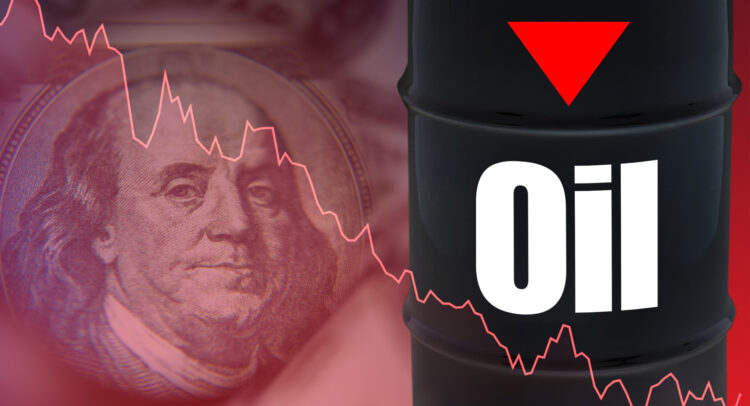Oil prices are sliding lower on news that the OPEC+ cartel is planning to raise production in June, potentially swamping the global market with supply.
Elevate Your Investing Strategy:
- Take advantage of TipRanks Premium at 50% off! Unlock powerful investing tools, advanced data, and expert analyst insights to help you invest with confidence.
- Make smarter investment decisions with TipRanks' Smart Investor Picks, delivered to your inbox every week.
West Texas Intermediate (WTI) crude oil, the U.S. standard, is down nearly 2% and trading at $57.56 a barrel. Brent crude oil, the international benchmark, is down 1.5% and trading at $60.32 per barrel. Oil prices have now fallen more than 20% this year.
The latest decline comes after the Organization of the Petroleum Exporting Countries and its allies (OPEC+) announced plans to increase output by 411,000 barrels per day starting in June. The decision comes a month after OPEC+ surprised the market by agreeing to raise production in May by the same amount.
The June production increase is nearly triple the 140,000 barrels per day that investment bank Goldman Sachs (GS) had originally forecast and says is needed to meet global demand. OPEC+ is bringing more than 800,000 barrels a day of additional supply to the market over the course of two months even though evidence points to a slowdown in the global economy.
The economies of China and the U.S., the world’s two biggest consumers of crude oil, show evidence of decline, with many economists forecasting a recession in America. However, OPEC+ continues to raise production, saying it anticipates an economic rebound in the second half of this year and leading into 2026.
Oil prices in April posted their biggest monthly drop since 2021 during the depths of the Covid-19 pandemic. Goldman Sachs is now forecasting that WTI and Brent crude oil prices will average $56 and $60 per barrel, respectively, this year. Oil majors such as Chevron (CVX), Shell (SHEL) and ExxonMobil (XOM) just reported first-quarter financial results that fell short of expectations due largely to lower crude prices.
CVX stock is down 13% over the past year, including a 5% decline in 2025.










